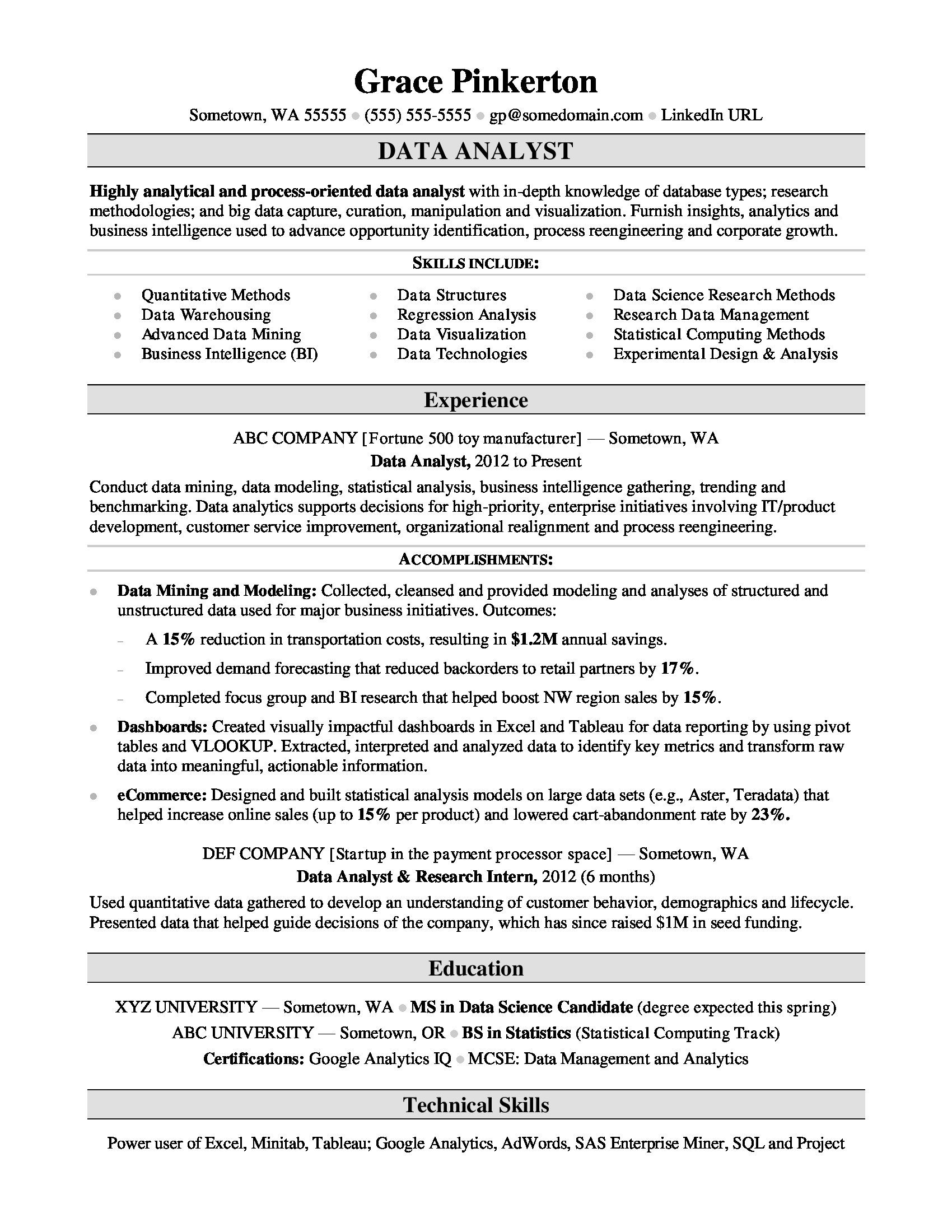A data analyst resume is a document that showcases the skills, qualifications, and experience of a professional in the field of data analysis. It is used by individuals who are seeking employment as data analysts and provides employers with a summary of their capabilities and achievements.
A well-crafted data analyst resume can be the key to landing a job in this competitive field. It not only highlights the candidate’s educational background and work experience but also emphasizes their analytical and problem-solving skills, attention to detail, and ability to work with large datasets.
Why do you need a data analyst resume?
If you are aspiring to work as a data analyst, having a strong resume is essential. Here are a few reasons why you need a data analyst resume:
- Showcase your skills: A resume allows you to highlight your skills and qualifications that make you a suitable candidate for the data analyst role. It provides an opportunity to showcase your technical expertise, data visualization skills, and proficiency in statistical analysis.
- Create a first impression: A well-crafted resume can make a lasting impression on potential employers. It is your chance to make a strong first impression and grab the attention of hiring managers.
- Demonstrate your experience: Your resume should outline your relevant work experience in the field of data analysis. It should provide details about the projects you have worked on, the tools and technologies you have used, and the outcomes you have achieved.
- Stand out from the competition: In today’s competitive job market, having a standout resume can give you an edge over other candidates. It helps you differentiate yourself and demonstrate why you are the best fit for the position.
What to include in a data analyst resume?
When writing a data analyst resume, it is important to include the following sections:
- Contact information: Begin your resume with your full name, phone number, email address, and LinkedIn profile URL.
- Summary or objective statement: This section should provide a brief overview of your skills, experience, and career goals as a data analyst.
- Educational background: Include information about your educational qualifications, such as your degree, university, and any relevant coursework or certifications.
- Work experience: Detail your previous work experience in reverse chronological order. Mention the company name, job title, and dates of employment. Describe your responsibilities and accomplishments using bullet points.
- Technical skills: List the technical skills that are relevant to the data analyst role, such as programming languages, statistical software, data visualization tools, and databases.
- Projects: Highlight any significant data analysis projects you have worked on. Describe the objectives, methodologies, and results of each project.
- Achievements: Include any awards, honors, or recognition you have received for your work in the field of data analysis.
- References: You can choose to provide references or simply mention that they are available upon request.
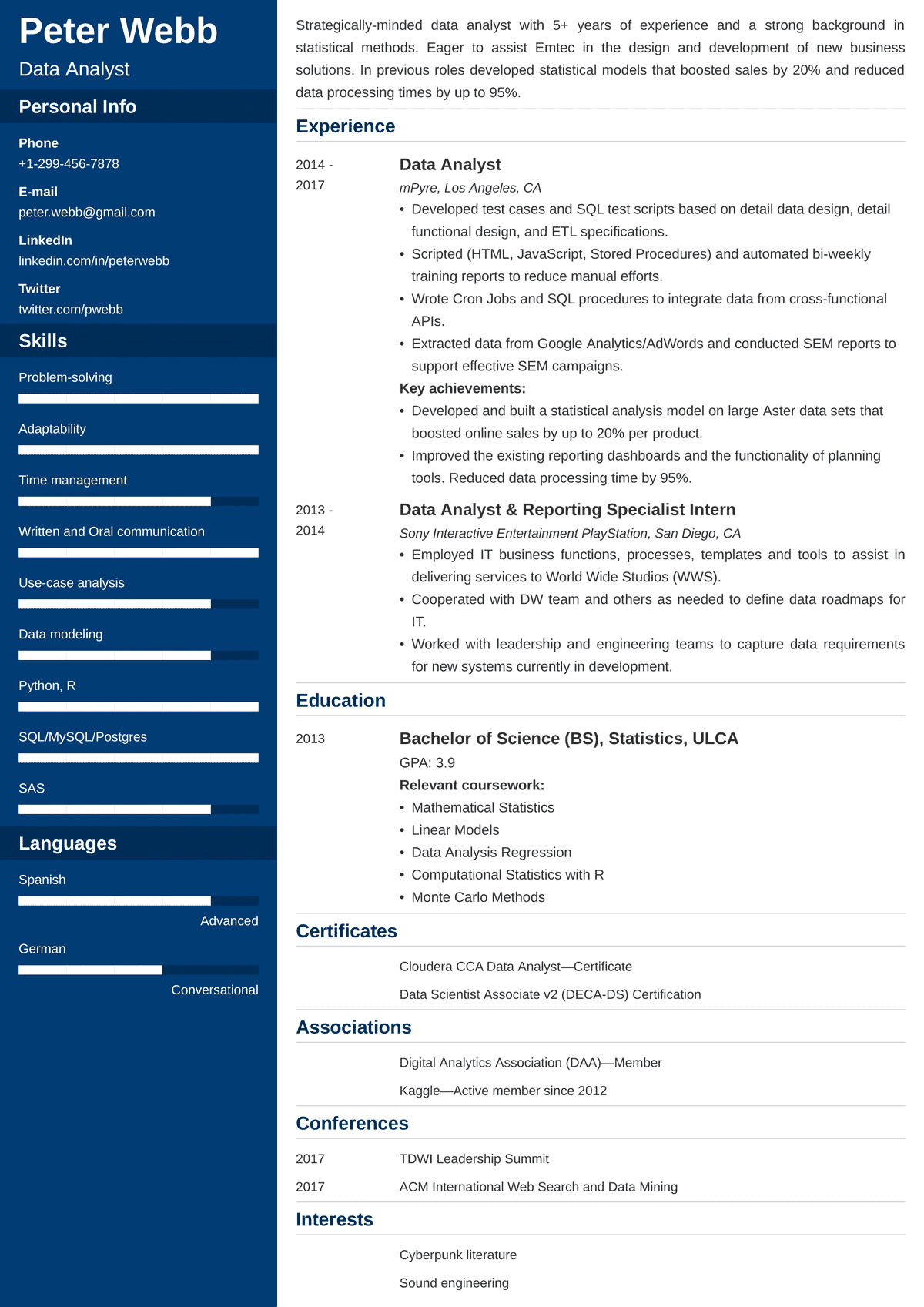
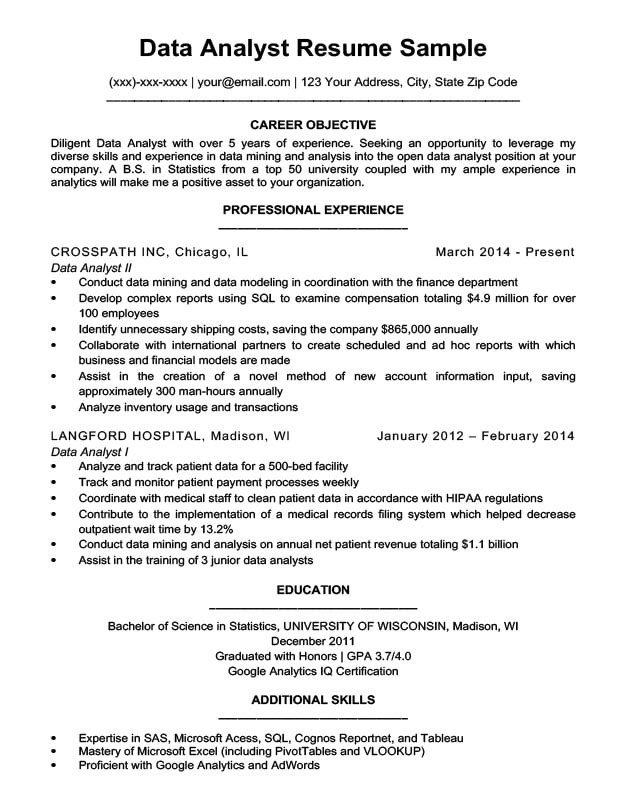
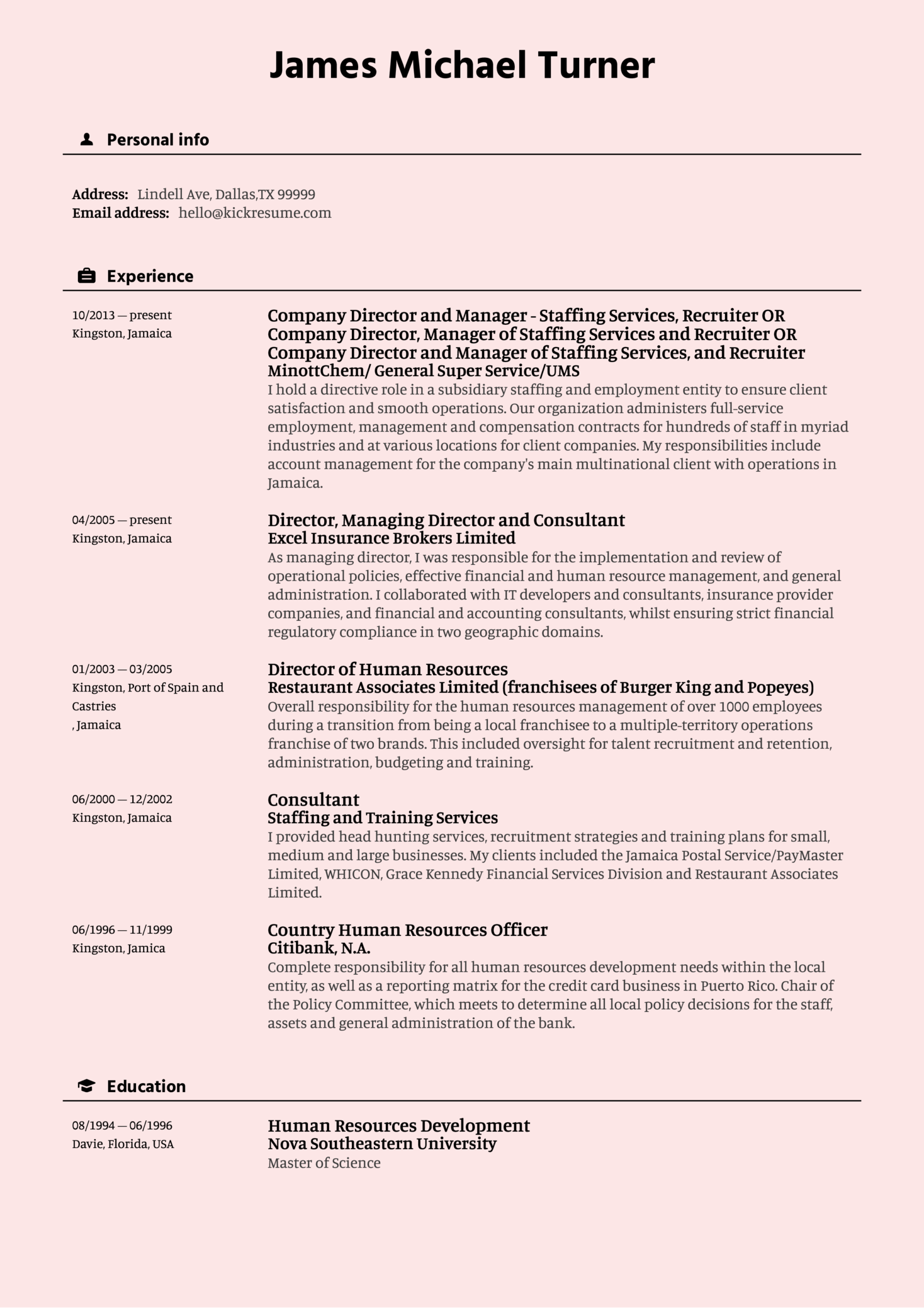
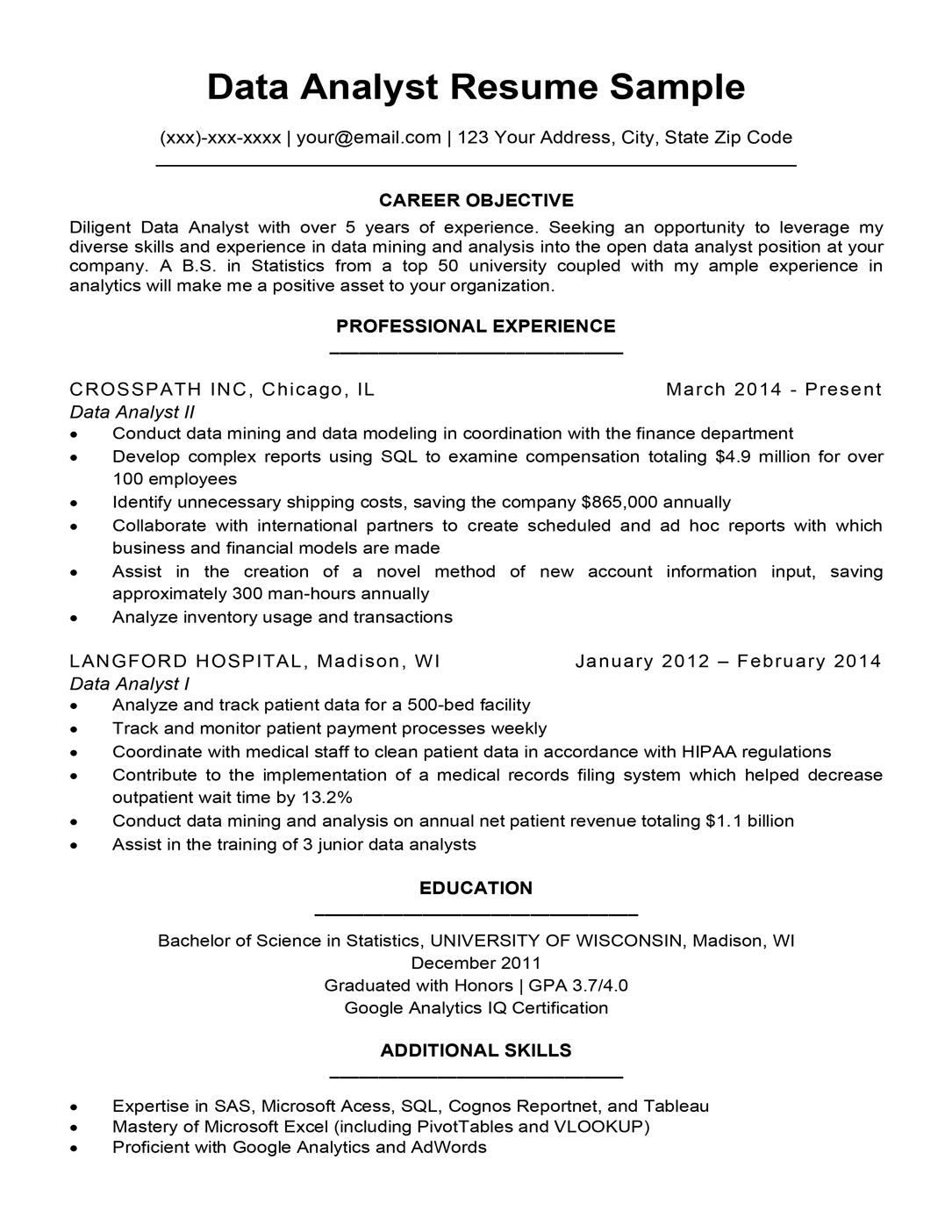
How to write a data analyst resume?
Follow these steps to write an effective data analyst resume:
1. Research the job requirements: Read the job description carefully to understand the specific skills and qualifications that the employer is looking for. Tailor your resume to highlight these requirements.
2. Choose a format: Select a resume format that best suits your experience and skills. The most common formats for data analyst resumes are chronological, functional, and combination.
3. Craft a compelling summary or objective statement: Write a concise and engaging summary or objective statement that highlights your key strengths and career goals.
4. Highlight your relevant skills: Create a separate section to list your technical skills, such as programming languages, statistical software, and data visualization tools.
5. Showcase your work experience: Describe your previous work experience in detail, focusing on your achievements and the impact you made in your role as a data analyst.
6. Quantify your accomplishments: Whenever possible, use numbers and metrics to quantify your achievements. This helps employers understand the impact you have had in your previous roles.
7. Use action verbs: Begin each bullet point in your work experience section with a strong action verb to make your statements more impactful and engaging.
8. Proofread and edit: Before submitting your resume, carefully proofread it for any spelling or grammatical errors. Use a professional tone and ensure the formatting is consistent throughout.
In conclusion, a well-written data analyst resume is crucial for securing a job in this competitive field. It is a comprehensive document that showcases your skills, qualifications, and experience as a data analyst. By following the steps outlined in this article and including the necessary sections, you can create a compelling resume that stands out to potential employers. Remember to tailor your resume to the specific job requirements and emphasize your achievements and technical skills. Good luck!
Data Analyst Resume Template Word – Download
